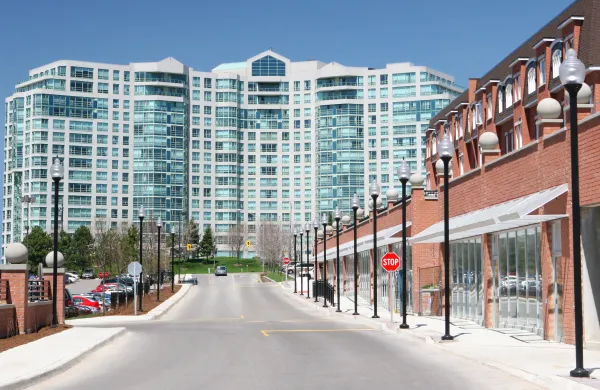In late January, during a wide-ranging conversation in his corner office at Fiat's Lingotto headquarters in Turin, the automaker's silver-haired chairman discussed everything from how gratified he was that the family business was showing signs of recovery to how he'd learned to ski as a child on the slopes of Sestriere, the Alpine mountain resort built by his father, Edoardo, the son of Fiat founder Giovanni. "The only drawback to Sestriere," joked Umberto, "is that the trails are so well groomed, there are no moguls to ski."
Four months later, on May 27, Umberto Agnelli died at 69 of lymphoma. His legacy may turn out to be that he rescued Fiat from a devastating liquidity crisis and set the company on the road to recovery. Succeeding his far more famous brother, Gianni, who died, also of cancer, in January 2003, Umberto galvanized the far-flung and sometimes disputatious Agnelli clan into plumping up more money to recapitalize Fiat so that the company could stave off creditors, invest in new models and work its way toward profitability. The automaker has cut its catastrophic losses, and some analysts see it breaking even next year.
But whether Agnelli's efforts will succeed in salvaging Fiat won't be known for many months, perhaps even years -- as he well understood. "The road ahead is still very bumpy," Agnelli acknowledged in January, even as he pointed with obvious satisfaction to the launch of new cars -- Fiat's Panda and its subsidiary Lancia's Ypsilon -- that were helping to stanch the erosion of the automaker's European market share.
To the last, Agnelli, behind a brave face -- the only outward hint of his condition was that he no longer chain-smoked Marlboro Lights -- was laying the groundwork for one final act that he felt would secure Fiat's future and preserve the wealth of the next generation of Agnellis. The family has many business interests -- Umberto presided for years over its investment companies -- but the clan's one-third stake in Fiat is by far its most important, and most vulnerable, holding.
In February 2003, Agnelli had brought in a new CEO for Fiat: Giuseppe Morchio, 56, a former Pirelli executive who had a reputation for creating riches after selling the tire company's optical unit for $3.6 billion at the height of the technology bubble. But tensions between the Agnelli family and the CEO had been brewing for some time because the family felt he was not sharing enough information on the company, at the same time that he was seeking greater power within Fiat. According to newspaper La Repubblica, Morchio in mid-April insisted that he be allowed to invest alongside the Agnellis in the chain of companies through which they control Fiat. The nature and the timing of the request -- Morchio knew of Agnelli's condition -- upset family members, the newspaper said. The CEO seemed to be brazenly angling to succeed Agnelli as chairman. Morchio could not be reached for comment.
So Agnelli devised a clever postmortem contingency plan: The very day after he was buried, the Fiat board adopted his succession scheme, naming a longtime Agnelli family confidante -- Luca Cordero di Montezemolo, 56, CEO of Fiat's Ferrari-Maserati unit -- as chairman, thwarting Morchio's ambitions. The CEO promptly resigned, and the board replaced him with a candidate who had received Agnelli's blessing: Sergio Marchionne, 51, a Canadian who had been running SGS, a Swiss security services business in which the Agnelli family has long had an interest. Marchionne is well known in Switzerland for his turnaround skills, having restructured both SGS and chemicals concern Lonza.
Agnelli's death climaxes six years of tumult and tragedy for the Italian industrial dynasty. Although the automaker can now pay its debts as they come due and develop new models -- something it neglected for years -- it is still awash in Ferrari-red ink. Losses narrowed last year from E2.9 billion ($3.3 billion) to E1.1 billion, but Fiat's banks have the option of converting E3 billion of its E4.4 billion debt into equity in September 2005 if the automaker cannot return its credit rating to investment grade -- a condition it almost surely will not meet. The debt conversion would dilute the Agnellis' control of Fiat by one third, to about 20 percent.
The family, meanwhile, has suffered not only the deaths of Gianni and Umberto but also the loss of the brothers' eldest male heirs -- including Umberto's son Giovanni Alberto, who had been groomed to lead the empire. He died of cancer at 33 in 1997.
Umberto's death leaves the Agnellis without a patriarch. Perhaps the closest substitute -- largely by virtue of holding the biggest stake in the family's primary investment vehicle -- is John Elkann, Gianni's grandson, who was named a Fiat vice chairman as part of the recent board reshuffle. At 29, Elkann represents the fifth generation of Agnellis since the founding of Fiat -- a group that is still relying on the advice of family loyalists. In the Morchio affair, Elkann was counseled by Gian Luigi Gabetti, the head of the Agnelli holding company, IFI, through which the family controls Fiat, and longtime Agnelli legal adviser Franzo Grande Stevens. Umberto had told all three of his desire to oust the CEO and replace him with Marchionne.
The Agnellis have great hopes for Elkann, but they privately acknowledge that he is not yet capable of binding the family together in the way that Umberto and Gianni could.
The prime example of that talent in the older generation was Umberto's success last year at persuading some 70 cousins, nephew and nieces to help bail out Fiat by anteing up E250 million of their own money. The cash was needed to maintain the family's 30 percent stake in the automaker following a E2 billion capital increase to jump-start the turnaround effort. For some Agnellis, answering the cash call presented a financial burden, or at least an imposition. Italy's aristocratic circles buzzed with talk of family members having to sell yachts, paintings, vacation homes and vineyards (including Château Margaux) to pay their dues. Umberto promised his relatives that they would be paid back for their participation in the capital increase, largely through dividend distributions from the liquidation of other assets within the Agnelli group. The family controls companies that make Iveco trucks and New Holland tractors and owns Italy's biggest department store chain, its top travel and tourism company, one of the world's top soccer teams -- Juventus -- a majority interest in French financial firm Worms and a chunk of one of Europe's biggest banks, Sanpaolo IMI.
Making good on the pledge will now fall largely to Elkann. He is expected to sell assets at IFIL, the Agnellis' chief investment company, and he may also need to restructure the family holdings -- which certain of his cousins have long urged as a way to give them greater liquidity. The most likely course: merging Giovanni Agnelli & Co., the family holding company for Fiat, into IFI, to let family shareholders sell their investments.
As for Fiat, the Agnellis and their friends maintain that the family remains committed to Umberto's vision of restoring the automaker to operating profitability by the end of 2006. However, while Umberto publicly proclaimed the family's commitment to remaining long-term caretakers of the car company, in private he was candid about little Fiat's being unable to avoid participating in the consolidation of the global car industry. His death may speed up the company's plans to trigger an option to force General Motors, which now owns 10 percent of Fiat, to acquire all of the company.
It was Umberto's pragmatic streak that distinguished him from his glamorous older brother, Gianni, whose jet-setting ways made him a princely icon to a resurgent postwar Italy. Umberto was often left to pick up the pieces after his dashing brother -- including those of Fiat. Despite his lifelong love of the car business, Gianni in his later years allowed a succession of managers to push Fiat into new areas while neglecting the core business. It fell to Umberto, who was less devoted to cars than his brother was, to try to put things right again.
"Umberto was an incredibly hard worker who in the end succeeded in leaving the company on a firm footing to achieve the objectives he, the family and board set out for Fiat, which were always pragmatic and realistic ones," says Gabriele Galateri, who worked for 15 years as Agnelli's right-hand man at the family's investment companies before becoming chairman of Mediobanca. "I am sure his legacy will be Fiat's comeback." That would be nice, but it isn't assured.
Contributor Rob Cox is U.S. editor of breakingviews.com, the London-based financial commentary service.





